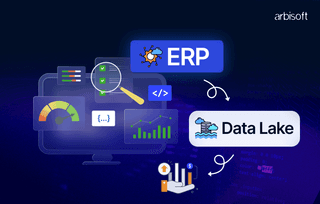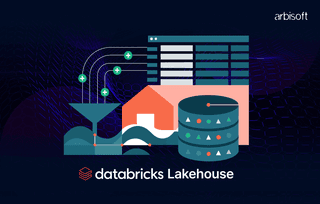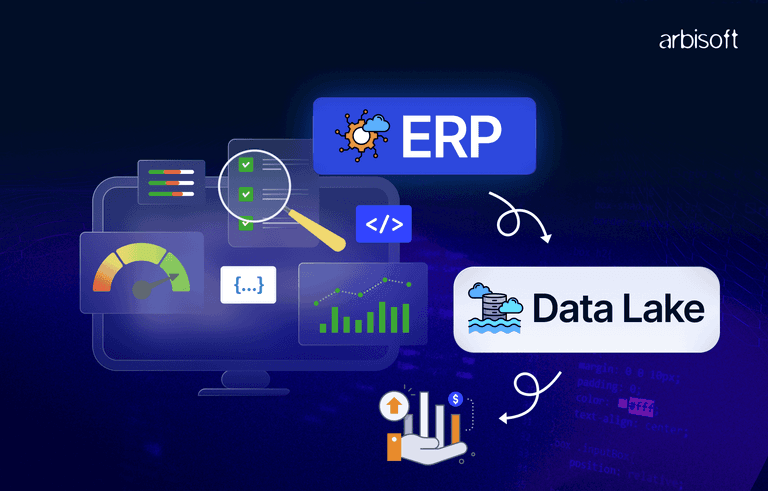We put excellence, value and quality above all - and it shows




A Technology Partnership That Goes Beyond Code

“Arbisoft has been my most trusted technology partner for now over 15 years. Arbisoft has very unique methods of recruiting and training, and the results demonstrate that. They have great teams, great positive attitudes and great communication.”
The Complete DevOps Roadmap for Organizational Implementation

Many businesses face pressure to deliver software quickly, but how can you do this when development and operations teams aren't aligned? Developers focus on new features, while operations ensure stability. When these teams work separately, it leads to slower releases, more errors, and reduced collaboration. Does this sound familiar?
Imagine your company is about to launch a new app. Developers add great features, but at the last minute, the operations team discovers bugs. Fixing these delays the release while competitors pull ahead. How do you avoid this?
This is where DevOps comes in. What if your development and operations teams were aligned, collaborating closely, automating tasks, and focusing on continuous improvement? DevOps solutions enable companies to deliver high-quality software faster, catching bugs earlier and launching on time.
Curious how? This blog will cover what DevOps is, why it matters, and how to implement it in your organization. We'll discuss key factors, provide a roadmap, and tackle challenges. By the end, you'll see how DevOps can transform your software delivery and keep you ahead of the competition. Ready to dive in? Let’s get started!
The Evolution from Waterfall to DevOps
Software development has come a long way, and modern software development services have been instrumental in driving this evolution. It all started with the Waterfall method, which worked in a step-by-step manner. However as technology and customer needs changed, this approach became too slow and rigid. That's where Agile and, later, DevOps came in, offering more flexible and faster ways to build and deliver software.
The Limitations of the Waterfall Method
The Waterfall method was once the standard for developing software. However, it couldn’t keep up with the fast-paced changes in technology. It was slow, and the final product often didn’t meet the high standards that businesses and customers expected.
The Rise of Agile
Agile methods became popular because they allowed teams to adapt quickly to changes. However, Agile mainly focused on the development side, leaving the operations team out of the loop. To truly optimize the software process, development and operations teams needed to collaborate more closely.
The Concept of DevOps
DevOps was created around 2008-2009 by Patrick Debois to solve the issues that arose from the separation between development and operations. DevOps is a methodology that combines software development (Dev) and IT operations (Ops) to improve the efficiency and quality of software delivery. It focuses on breaking down silos between teams, automating tasks, and creating a culture of continuous improvement. DevOps is crucial for organizations that want to stay competitive, as it enables faster releases, better collaboration, and more reliable software.
Critical Success Factors in DevOps
To succeed with DevOps, companies need to change how their teams work together. This means improving collaboration between departments like engineering, security, and operations. Automation is also key to making processes faster and more reliable.

Roadmap for Successfully Implementing DevOps in an Organization
Here’s a step-by-step guide to implementing DevOps in your organization:
1. Assess Current State
Start by evaluating your organization’s existing processes, tools, and team dynamics. Identify areas for improvement, such as version control, release management, and collaboration tools.
2. Define Objectives and Metrics
Set clear DevOps goals, such as faster release cycles, improved software quality, or reduced downtime. Establish metrics to measure success, like deployment frequency, lead time for changes, and mean time to recovery (MTTR).
3. Create a Collaborative Culture
Foster communication and build cross-functional teams comprising members from development, operations, and other relevant departments. Encourage practices like regular stand-ups, shared responsibility, and blameless post-mortems to strengthen collaboration.
4. Encourage Teamwork
Good team dynamics are important for DevOps success. Teams need to be open to change and work together effectively.
5. Select the Right Tools
Choose tools that align with your DevOps goals. Consider using Jenkins for CI/CD pipelines, Terraform for infrastructure as code, Docker for containerization, and other automation frameworks that support your objectives.
6. Implement Automation
Automate testing, deployments, and repetitive tasks to reduce errors and accelerate development by leveraging automation testing services. Start by automating the most time-consuming or error-prone processes, gradually expanding automation across the entire lifecycle.
7. Monitor and Optimize
Continuously monitor your systems to identify areas for improvement. Use monitoring tools like Prometheus, Grafana, or the ELK stack, and establish feedback loops to ensure ongoing optimization of practices.
8. Scale and Evolve
As your organization grows, scale DevOps across all teams. Adopt advanced practices such as DevSecOps for enhanced security, AIOps (Artificial Intelligence for IT Operations), and continuous learning to keep your teams up-to-date with the latest methodologies.
Challenges That Can Be Faced While Implementing DevOps
Implementing DevOps can come with challenges, including:
- Adapting to Change: Teams may be resistant to adopting new practices, especially if they’ve been following the same processes for years.
- Tooling and Integration Issues: Choosing the right tools and integrating them with existing systems can be complex and time-consuming.
- Skill Gaps: Finding or training employees with the necessary DevOps skills can be difficult, especially in rapidly evolving areas like automation and cloud computing.
- Security Concerns: Balancing the need for speed with security is a common challenge in DevOps, making it essential to integrate cybersecurity services early in the process..
- Scalability Problems: As you scale DevOps practices across your organization, maintaining consistency and avoiding silos can be challenging.
Having trouble streamlining your DevOps process? We’re here to guide you every step of the way!

Ready to streamline your DevOps process? Download our guide now and start overcoming challenges with ease!

Transform Your Development Process with Arbisoft’s Expert DevOps Services
Arbisoft’s DevOps services guide you through every step, from planning to ongoing development and monitoring, making your digital transformation smoother. We focus on continuous improvement, helping your team adapt to changing needs with ease.
Our automation tools simplify complex processes, ensuring stable and timely software updates. With over a decade of experience in enterprise software and a commitment to Agile methods, we deliver high-quality solutions. Plus, we keep an eye on your software 24/7 to fix any issues before they affect your users.
For more information, contact us now.
Conclusion
DevOps is more than just a set of tools and practices; it’s a cultural shift that requires careful planning, collaboration, and continuous improvement. By following the roadmap outlined in this blog, you can successfully implement DevOps in your organization, overcoming challenges and reaping the benefits of faster, more reliable software delivery.
























